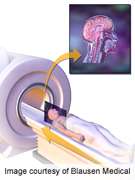Roughly three in 10 diagnostic accuracy studies published in journals with impact factors of four or higher have overinterpretation, according to a review published in the May issue of Radiology.
(HealthDay)—Roughly three in 10 diagnostic accuracy studies published in journals with impact factors of four or higher have overinterpretation, according to a review published in the May issue of Radiology.
Eleanor A. Ochodo, M.B.Ch.B., from University of Amsterdam, and colleagues conducted a literature review to identify diagnostic accuracy studies published between January and June 2010 in journals with an impact factor of four or higher. Primary studies of the accuracy of one or more tests compared with a clinical reference standard were included.
The researchers found that 39 of 126 studies (31 percent) contained a form of actual overinterpretation, including 29 (23 percent) with an overly optimistic abstract, 10 (8 percent) with a discrepancy between the study aim and conclusion, and eight with conclusions based on selected subgroups. Authors of 89, 88, and 57 percent of the studies, respectively, did not include a sample size calculation, did not state a test hypothesis, and did not report confidence intervals of accuracy measurements, all demonstrating potential overinterpretation. Analyzing a subgroup of imaging studies found that 16 (30 percent) and 53 (100 percent) contained forms of actual and potential overinterpretation, respectively.
"Overinterpretation and misreporting of results in diagnostic accuracy studies is frequent in journals with high impact factors," the authors write.
More information:
Abstract
Full Text (subscription or payment may be required)
Editorial (subscription or payment may be required)
Journal information: Radiology
Health News Copyright © 2013 HealthDay. All rights reserved.























